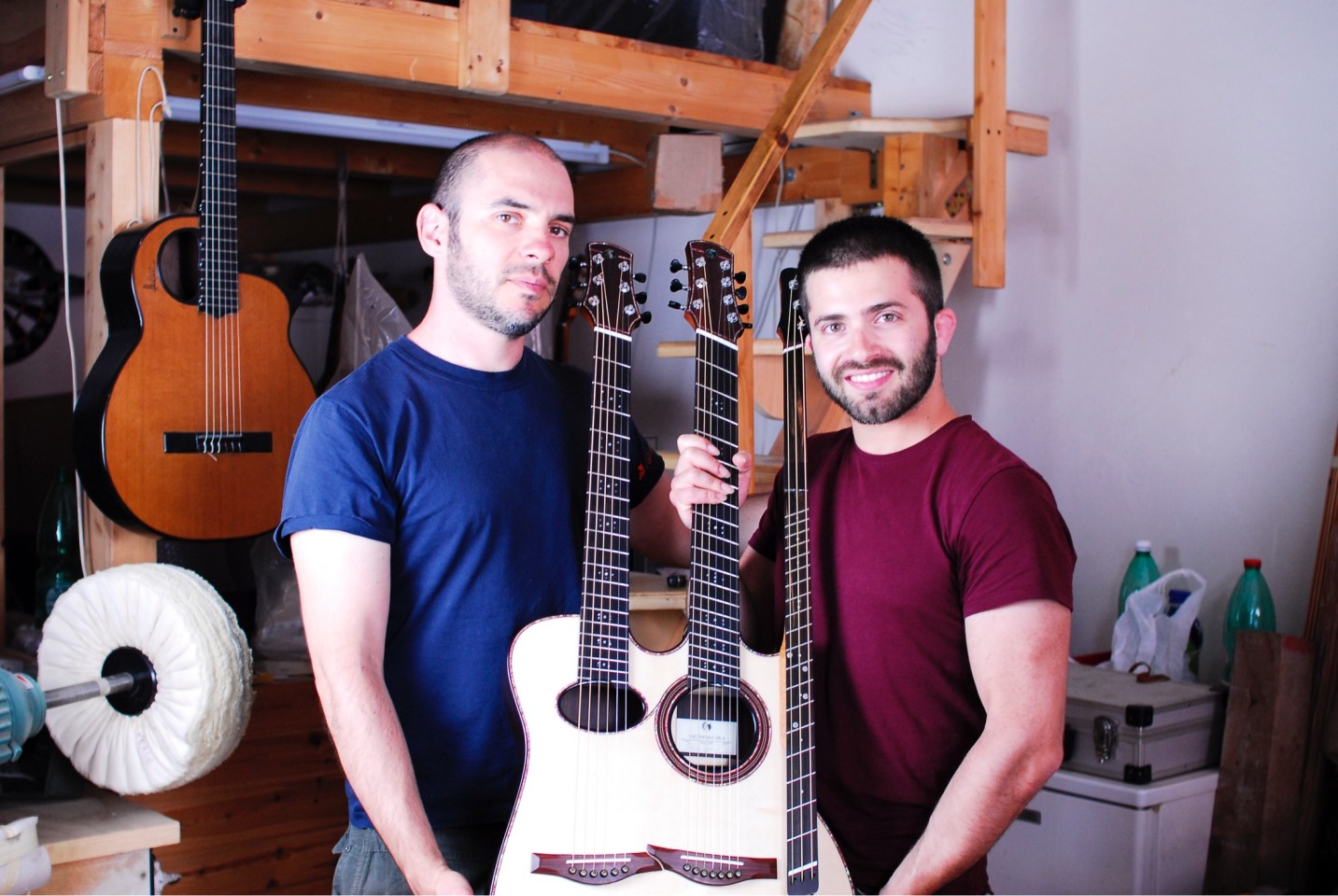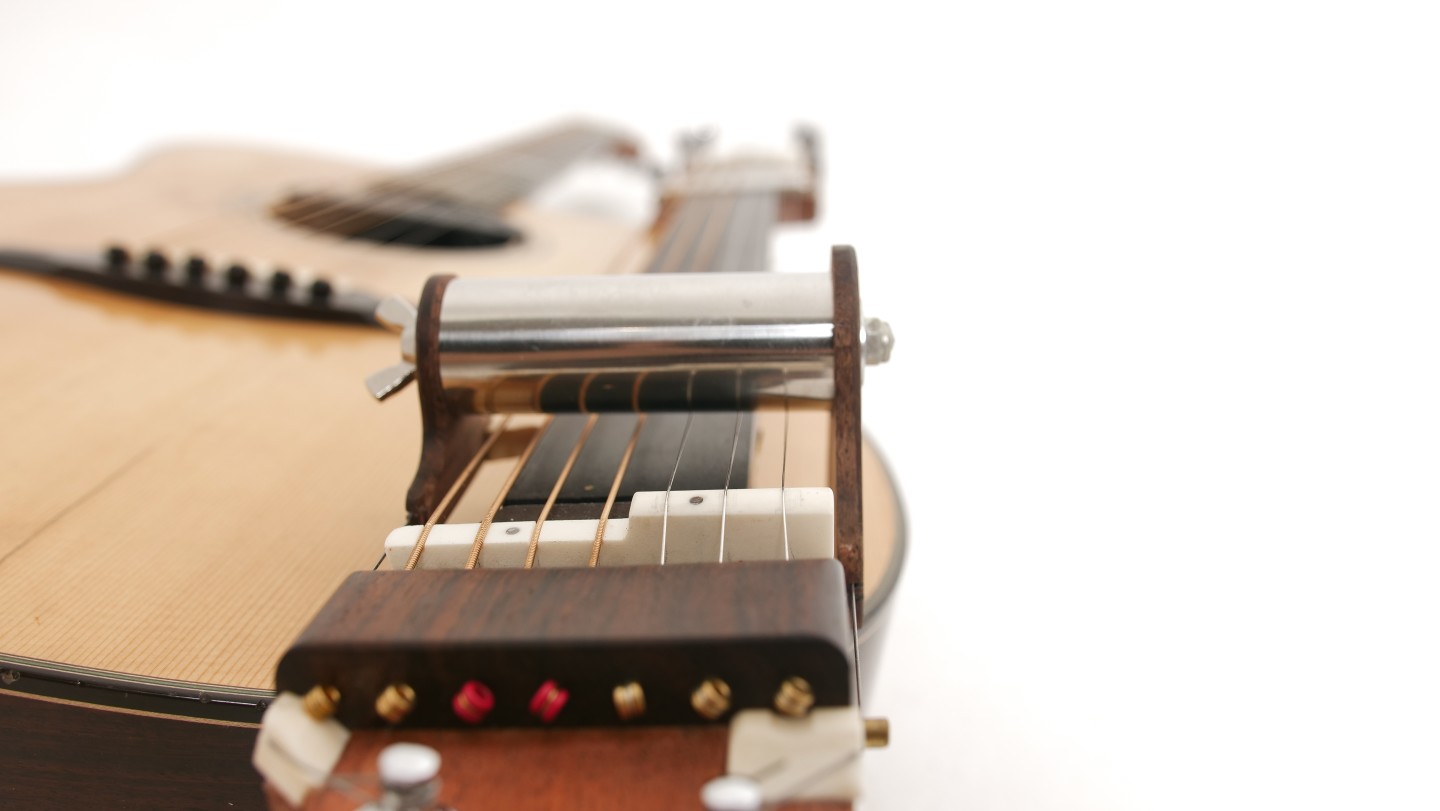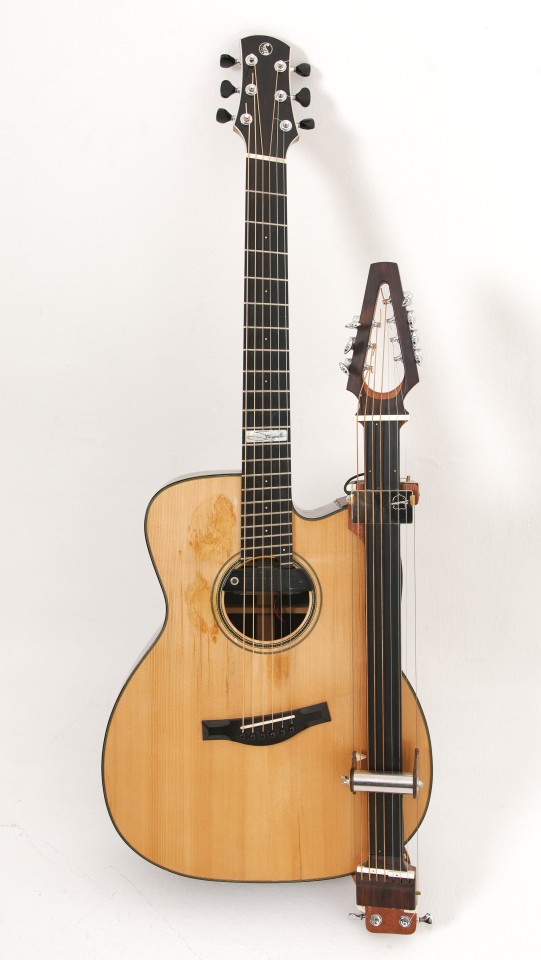Every so often we stumble across something truly awesome on platforms like Spotify, Bandcamp and YouTube. In this case it was a beautiful rendition of one of my favorite George Harrison compositions, While My Guitar Gently Weeps, on a custom acoustic with a novel slide guitar attachment.
Both that performance and the attachment are the work of accomplished Italian tapper and picker Luca Stricagnoli, who has amassed over 800,000 followers on social media and more than 100 million views for his online videos.
In early March, 2014, Candyrat Records posted a video on its YouTube channel of Stricagnoli playing the theme from the movie Last of the Mohicans – using three acoustic guitars and a violin bow. To date, the video has attracted nearly 13 million views and was followed the year after by the release of his eponymous first album. More videos and more music followed, including the spirited cover of The Beatles song from 1968’s White Album – which you can watch below.
A bunch of custom acoustics have also been developed in collaboration with luthier Davide Serracini, who turns Stricagnoli’s ideas into prototypes and then final builds.
THE BEATLES (While My Guitar Gently Weeps) – Luca Stricagnoli
The current arsenal of instruments includes a Grand Auditorium model, which was built to replace a guitar that got worn out after intense touring, and features extra space between the strings to accommodate the Italian’s awe-inspiring playing style.
There’s a seven-string soprano model with high-pitched strings tuned in scale. This guitar is placed horizontally on a keyboard stand and is used for melodies and percussion (the latter by tapping on a metal plate mounted to the upper body for snare-like sounds and using the fleshy part of the hand between wrist and thumb to hit the wood of the body for kick sounds).
“When you play one guitar, the left and selects the notes and the right hand picks the strings – the two hands influence each other, they are dependent on one another,” Stricagnoli told us. “My goal was to separate the tasks of the hands to make them independent. That’s why I started using a second guitar, that I lay horizontally in front of me.
“You know Stanley Jordan, who plays with two guitars, using a tapping technique for the second guitar. In my case I use the second guitar a bit differently because I change all the strings, I put high-pitched strings tuned in scale. And I use this guitar with the right hand alone. So this way I can play a melody, and I can add percussion as well.”

Luca Stricagnoli
Perhaps the most visually striking of the Stricagnoli-designed family is the Reversed Triple Neck Guitar. The first neck has six strings and is used for melody creation using the left hand. The middle neck integrates the soprano guitar, and the third neck rocks three bass strings that go against the usual flow – in that the lower notes sit at the right and the higher notes fly up to the left (which is the opposite of a traditional right-handed setup). This means that sounding a bass line and bashing out some percussion won’t be too much of a stretch for the player.
And that brings us to Stricagnoli’s latest invention, the Reverse Slide Neck – something he describes as “the final step in the guitar’s evolution.”
The attachment has a wooden pin on the underside at the headstock end that is placed in a hole made in the lower side of the host guitar’s body at the neck end. The other end of the attachment is secured in place by magnets in a wooden mount on the host guitar’s body and a block under the Reverse Slide Neck.

Luca Stricagnoli
There are no frets here, but a metal slide is mounted atop the strings. The slide module runs along tensioned string guides that are not used during play, but allow the player to move the slide and leave it in place.
At the tuner end of the Reverse Slide Neck is a stepped bridge which sees the three high-pitched strings that are used to create the melody riding higher than the four low-pitched strings. This means that the slide doesn’t touch the bass strings and they can be used for tapped bass lines. And like the bass neck on the Reversed Triple Neck Guitar, the pitch runs from right to left, low to high.
Though a player would need two hands to play slide in a traditional sense – where a bar, bottle, metal or ceramic slide is used to alter pitch and the picking hand to sound the strings – the Reverse Slide Neck allows for picking the strings while moving the slide, sounding some low-end accompaniment if needed and also tapping out some percussion at the same time using fingertips and a custom thumb ring (also one of Stricagnoli’s inventions) – all while the fretting hand sounds out chords or tapping-style runs on the upper neck. I’m exhausted just typing that out, but Stricagnoli makes it look so easy.
The three strings under the influence of the slide mechanism can be damped at the reverse nut end to keep them quiet during play, and though the Reverse Slide Neck can be played acoustically, a pickup has been installed so that the output can be amplified.

Luca Stricagnoli
The very talented Stricagnoli told us that he’s currently in the process of creating a crowdfunder to bring the attachment into limited production, albeit with a few modifications – including a new magnetic mounting system that would mean buyers wouldn’t need to break out the drill to attach the module, and the design would likely feature a headless tuning system, too.
That’s going to take a few more months to set up though, so while we wait let’s have a look at another video, this time showing off the Reversed Triple Neck Guitar.
EMINEM ON GUITAR (The Real Slim Shady) – Luca Stricagnoli – Fingerstyle Guitar
Source: Luca Stricagnoli
Source of Article
